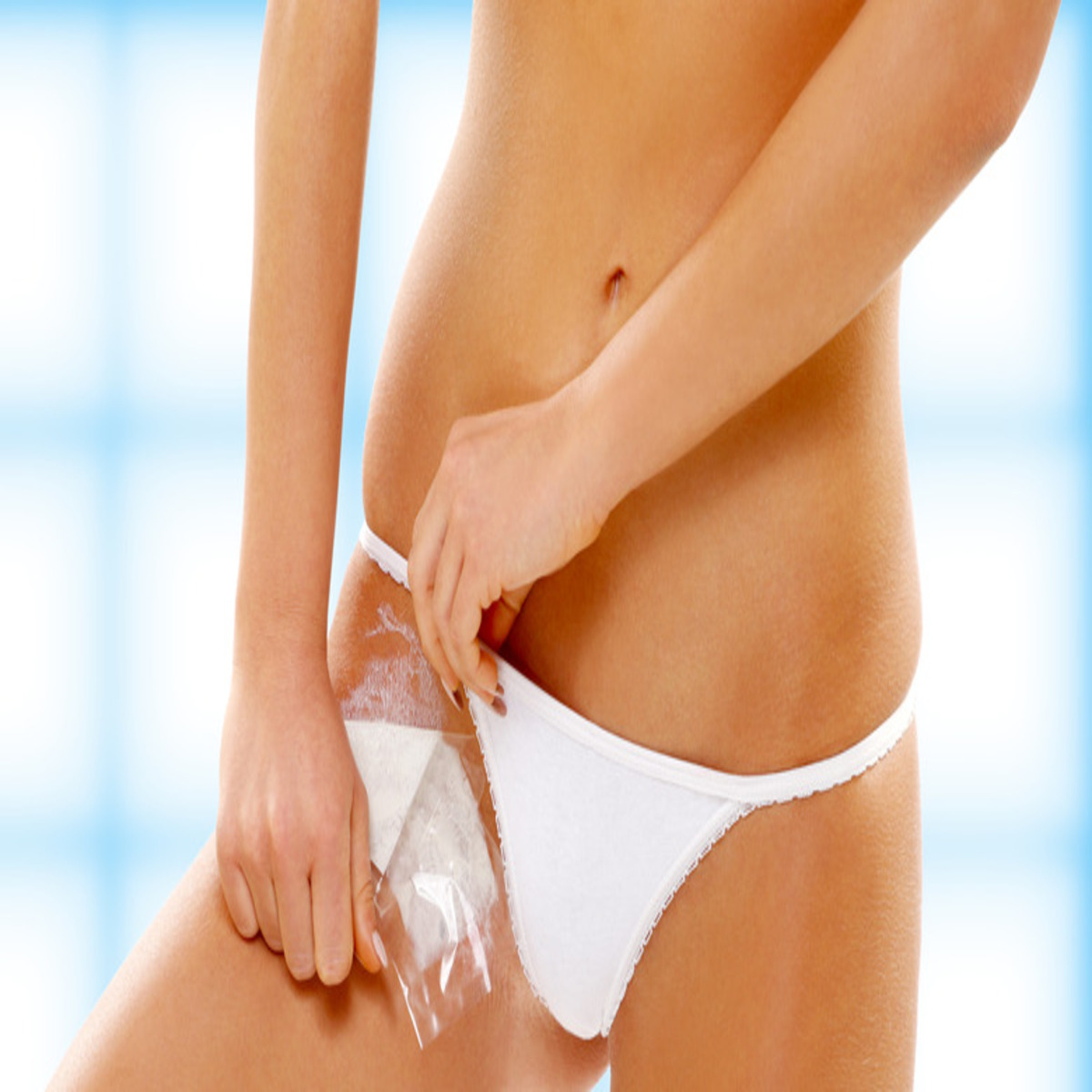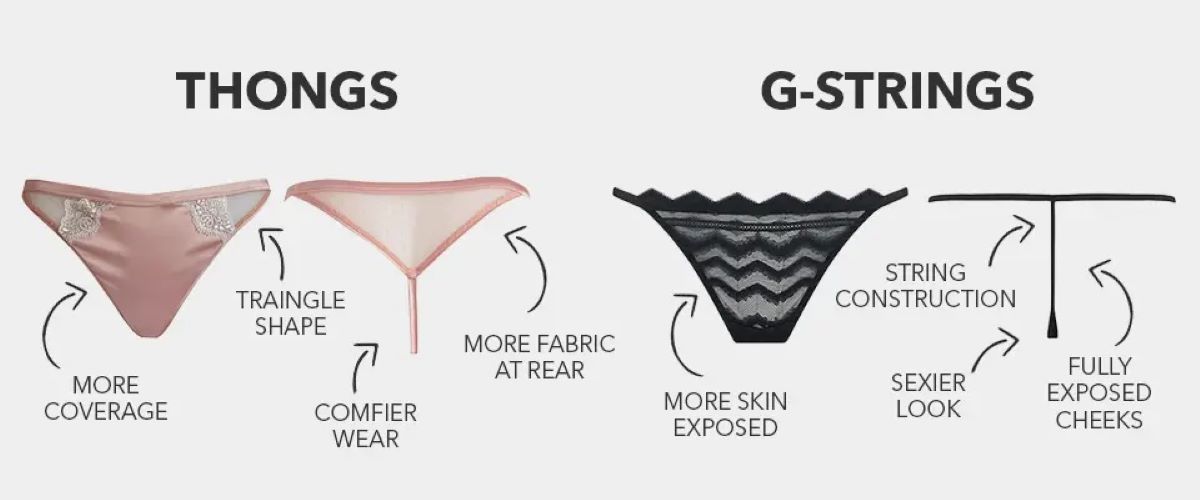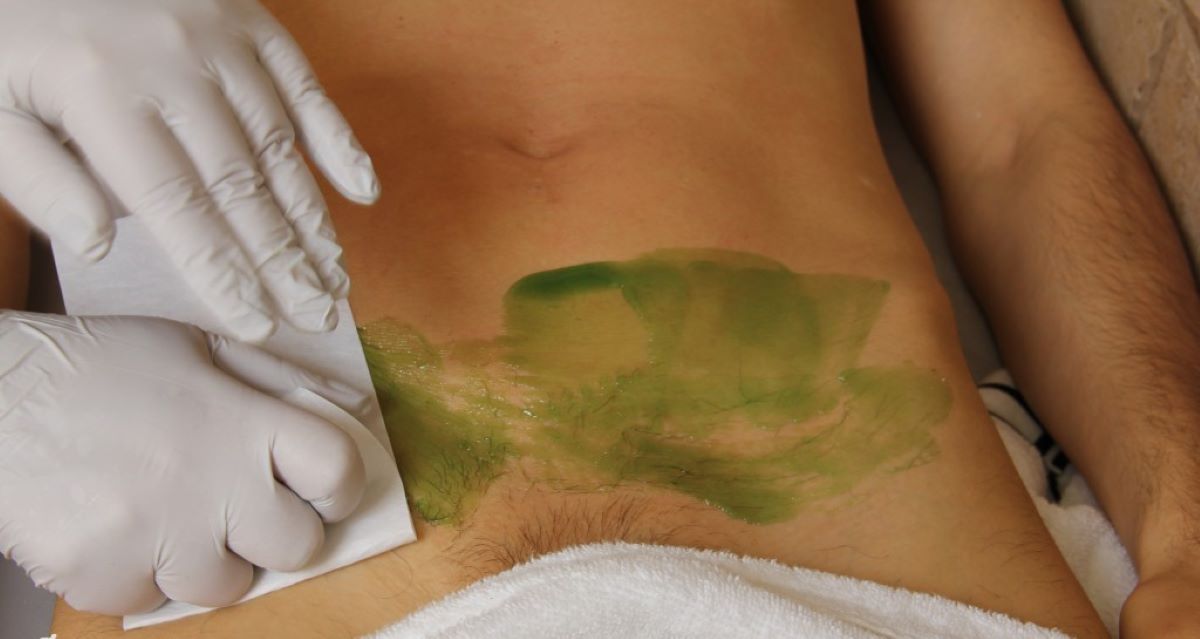Home>Women's Underwear>Bikinis>What To Do In Between Bikini Waxes


Bikinis
What To Do In Between Bikini Waxes
Modified: September 23, 2023
Discover the best tips for maintaining your bikini area between waxes, ensuring smooth and flawless skin all summer long. Say goodbye to unwanted hair with these helpful bikini maintenance tips.
(Many of the links in this article redirect to a specific reviewed product. Your purchase of these products through affiliate links helps to generate commission for Under-tec.com, at no extra cost. Learn more)
Table of Contents
Introduction
Bikini waxing has become a popular method of hair removal for both women and men, offering a smooth and long-lasting result. However, in between waxing sessions, it’s essential to take care of your bikini area to maintain the results and keep your skin healthy and comfortable. From exfoliating to soothing irritated skin, there are several things you can do to ensure your bikini area stays in optimal condition until your next waxing appointment.
Understanding proper bikini waxing techniques and aftercare practices is crucial to achieve the desired results. Waxing removes hair from the root, leading to a longer regrowth period compared to shaving or other temporary hair removal methods. It’s important to be aware of the proper methods for maintaining hair growth and preventing common issues like ingrown hairs and skin irritation.
In this article, we’ll explore various tips and techniques to help you navigate the time in between bikini waxes. Whether you’re a seasoned waxing enthusiast or new to the process, these suggestions will ensure that your skin remains smooth and healthy until your next appointment.
Understanding Bikini Waxing
Bikini waxing is a method of hair removal that involves using hot or cold wax to remove hair from the bikini area. It is a popular choice for individuals who want to achieve smooth, hair-free skin that lasts longer than traditional shaving. During a bikini wax, a trained esthetician applies the wax to the desired area and then removes it, along with the hair, using strips or by pulling the hardened wax off in the opposite direction of hair growth.
There are different types of bikini waxes to suit individual preferences and comfort levels. The basic bikini wax removes hair from the sides and top of the bikini area, while a Brazilian wax removes almost all of the hair, leaving a strip or small triangle at the front. Hollywood waxing is another option, which takes off all the hair in the bikini area.
One of the advantages of bikini waxing is that it offers long-lasting results. Because the hair is removed from the root, it takes longer to grow back compared to shaving, where the hair is only removed at the surface level. This means you can enjoy smooth skin for several weeks before needing another waxing session.
It’s important to note that bikini waxing can cause temporary discomfort or pain during the process. However, many people find that the results are worth it, as the discomfort subsides quickly, and they are left with smooth, hair-free skin. If you have a low pain tolerance or are new to waxing, it can be helpful to take an over-the-counter pain reliever about 30 minutes before your appointment to help minimize discomfort.
When it comes to preparing for a bikini wax, make sure your hair is at least a quarter-inch long, as this allows the wax to adhere properly and ensures that hair is effectively removed. If the hair is too short, it can be difficult for the wax to grab onto it, resulting in less efficient hair removal.
In the next sections, we will explore various techniques to help you maintain the results of your bikini wax in between appointments, ensuring that your skin remains smooth, comfortable, and irritation-free.
Maintaining Hair Growth
After getting a bikini wax, it’s important to take proper care of your bikini area to maintain the results and keep your hair growth in check. Here are some tips to help you maintain the desired hair growth in between waxing sessions:
- Regularly exfoliate: Exfoliating your bikini area is key to preventing ingrown hairs and keeping the skin smooth. Gently exfoliate the area 2-3 times a week using a gentle scrub or a soft brush. This helps remove dead skin cells and allows the hair to grow back properly.
- Avoid shaving: While it can be tempting to grab a razor and quickly remove any regrowth, it’s best to avoid shaving between waxing sessions. Shaving can lead to uneven regrowth and may make your next waxing session less effective. Stick to waxing to maintain a consistent and smooth hair growth pattern.
- Stay consistent: To achieve the best hair growth results, it’s important to maintain a regular waxing schedule. Typically, a bikini wax is recommended every 4-6 weeks, depending on your hair growth rate. By sticking to a consistent schedule, you can ensure that your bikini area remains smooth and hair-free.
- Avoid tweezing: While tweezing stray hairs can be tempting, it’s best to avoid this in between waxes. Tweezing can disrupt the natural hair growth cycle and may cause ingrown hairs. If you notice stray hairs, simply trim them with scissors instead of plucking them out.
- Moisturize: Keeping your bikini area moisturized is important for maintaining healthy skin and promoting proper hair growth. Opt for a gentle, fragrance-free moisturizer and apply it regularly to keep the skin hydrated and supple.
By following these tips, you can ensure that your hair grows back evenly and in the desired pattern, making your next waxing session more effective and comfortable. Remember to consult with a professional esthetician for personalized advice and recommendations based on your specific hair growth and skin type.
Exfoliating the Bikini Area
Exfoliating your bikini area is an essential step in maintaining smooth, healthy skin in between waxing sessions. By removing dead skin cells and unclogging pores, exfoliation helps prevent ingrown hairs and promotes even hair growth. Here are some tips for effectively exfoliating your bikini area:
- Choose the right exfoliator: When it comes to exfoliating your bikini area, it’s important to use a gentle exfoliating product specifically designed for sensitive skin. Look for products labeled as “gentle” or “suitable for bikini area” to avoid any harsh scrubbing that can irritate the skin.
- Exfoliate before waxing: It’s best to exfoliate your bikini area a day or two before your waxing appointment. This helps remove any dead skin cells or debris, allowing the wax to adhere better and ensuring a more effective hair removal process.
- Exfoliate regularly: In between waxing sessions, aim to exfoliate the bikini area 2-3 times a week. However, be cautious not to over-exfoliate as this can lead to skin irritation. Find a balance that works for your skin, and if you notice any redness or sensitivity, reduce the frequency of exfoliation.
- Use gentle strokes: When exfoliating, use gentle circular motions to avoid rubbing your skin too harshly. Be mindful of the sensitive nature of the bikini area and ensure you’re not causing any irritation or discomfort.
- Don’t forget to moisturize: After exfoliating, it’s important to apply a gentle, fragrance-free moisturizer to soothe and hydrate the skin. This helps maintain the skin’s moisture balance and keeps it soft and supple.
It’s important to note that if you have any cuts, scrapes, or open wounds in the bikini area, it’s best to avoid exfoliating until they are fully healed to prevent any further irritation or infection. Always listen to your skin and adjust your exfoliation routine accordingly.
By incorporating regular exfoliation into your bikini area care routine, you can help ensure smooth, healthy skin in between waxing sessions. With consistent exfoliation, you’ll minimize the chances of ingrown hairs and maintain a comfortable and irritation-free bikini area.
Gentle Hair Removal Methods
While it’s important to avoid shaving between bikini waxes, there may be times when you want to remove some stray hairs or maintain your bikini line in between appointments. In such cases, it’s important to opt for gentle hair removal methods that won’t interfere with the regrowth process or cause irritation. Here are some gentle hair removal methods to consider:
- Trimming: If you have some longer hairs that you want to keep in check, trimming is a safe and effective method. Use a pair of sharp, small scissors to carefully trim the unwanted hair to the desired length. Be cautious not to trim too short, as this can make waxing less effective during your next appointment.
- Depilatory creams: Depilatory creams are another option for gentle hair removal. These creams contain chemicals that break down the hair, allowing it to be wiped away. It’s important to choose a depilatory cream that is specifically formulated for sensitive areas and follow the instructions carefully to avoid any skin irritation.
- Threading: Threading is a hair removal technique that uses a twisted cotton thread to remove unwanted hair. It is commonly used on the face but can also be used on the bikini area. This method provides precise hair removal, and many find it less irritating compared to waxing or shaving.
- Sugaring: Similar to waxing, sugaring involves using a sticky paste made of sugar, lemon juice, and water to remove hair from the root. It is a gentler alternative to traditional waxing, as the paste adheres only to the hair, minimizing the risk of skin irritation. Sugaring can be performed by a professional or done at home with the right technique.
When using any of these hair removal methods in between bikini waxes, it’s important to be gentle and avoid excessive pulling or tugging. Additionally, always follow the proper instructions, conduct a patch test if trying a new product, and listen to your skin to avoid any adverse reactions or discomfort.
Remember, it’s best to consult with a professional esthetician to determine the most suitable hair removal method for your specific needs and skin type. They can provide personalized advice and recommendations based on their expertise and knowledge.
Soothing Irritated Skin
Occasionally, your skin may become irritated after a bikini wax or due to other factors. It’s important to take steps to soothe and calm the irritated skin in order to alleviate discomfort and promote healing. Here are some tips for soothing irritated skin in the bikini area:
- Cool compress: Applying a cool compress to the affected area can help reduce inflammation and soothe irritated skin. You can use a clean cloth soaked in cool water or even an ice pack wrapped in a thin towel. Gently hold the compress against the irritated skin for a few minutes at a time.
- Aloe vera gel: Aloe vera has natural soothing and healing properties, making it excellent for treating irritated skin. Apply a thin layer of pure aloe vera gel to the affected area and gently massage it in. Repeat this a few times a day to help calm the irritation and promote skin healing.
- Witch hazel: Witch hazel is a natural astringent that can help reduce inflammation and soothe irritated skin. Dab a cotton ball with witch hazel and gently apply it to the irritated area. Allow it to air dry or pat it gently with a clean towel. Repeat this a few times a day for relief.
- Hydrating creams or lotions: Using a gentle, fragrance-free moisturizing cream or lotion can help alleviate dryness and soothe irritated skin. Look for products that are specifically formulated for sensitive skin or post-waxing care. Apply a thin layer to the affected area and gently massage it in.
- Avoid irritants: During the healing process, it’s important to avoid irritating the skin further. This means avoiding tight clothing, harsh soaps, scented products, and excessive sweating. Opt for loose-fitting, breathable clothing and mild, hypoallergenic cleansers to ensure the irritated skin is not worsened.
If the irritation persists or worsens, it’s important to seek advice from a dermatologist or esthetician. They can provide specific recommendations and treatments based on the severity of the irritation and your individual needs.
Remember to be gentle with the affected area and give it time to heal. With proper care and soothing remedies, the irritated skin will gradually calm down, allowing you to enjoy a comfortable bikini area once again.
Avoiding Ingrown Hairs
Ingrown hairs can be a common issue after waxing, causing bumps, redness, and discomfort in the bikini area. However, there are steps you can take to prevent ingrown hairs and keep your skin smooth and bump-free. Here are some tips for avoiding ingrown hairs:
- Exfoliate regularly: Regular exfoliation is crucial for preventing ingrown hairs. By removing dead skin cells, you allow the hair to grow out of the follicle without getting trapped under the skin. Use a gentle exfoliating scrub or brush to exfoliate the bikini area 2-3 times a week.
- Moisturize regularly: Keeping your skin hydrated is important for preventing ingrown hairs. Dry skin can make it more difficult for the hair to break through the skin’s surface, leading to ingrown hairs. Use a gentle, moisturizing lotion or oil to keep your bikini area well-hydrated.
- Avoid tight clothing: Wearing tight clothing can trap moisture and create friction, which can contribute to ingrown hairs. Opt for loose-fitting clothing, especially immediately after waxing, to allow the skin to breathe and reduce irritation.
- Avoid touching or picking at the skin: It’s important to resist the temptation to touch or pick at the skin in the bikini area. This can introduce bacteria and increase the risk of infection. Keep your hands away from the area to prevent further irritation and the formation of ingrown hairs.
- Regularly change your razor or waxing strips: If you choose to shave or wax in between appointments, make sure to use fresh razors or waxing strips. Dull or old tools can contribute to ingrown hairs. Replace your razors regularly and avoid reusing waxing strips to minimize the risk of ingrown hairs.
- Consider using an ingrown hair serum: There are various ingrown hair serums available that can help prevent and treat ingrown hairs. These serums typically contain ingredients like salicylic acid or glycolic acid to exfoliate the skin and prevent hair from becoming trapped. Follow the instructions carefully when using these products.
If you do develop an ingrown hair, it’s important to resist the urge to pick or squeeze it. Instead, apply a warm compress to the area to help soothe inflammation and encourage the hair to surface. If the ingrown hair persists or becomes infected, consult with a dermatologist or esthetician for further guidance and treatment options.
By following these preventative measures, you can minimize the occurrence of ingrown hairs and keep your bikini area smooth and free from bumps and irritation.
Hygiene Practices
Maintaining proper hygiene in the bikini area is crucial for keeping your skin healthy and preventing infections or other issues. Here are some hygiene practices to incorporate into your routine:
- Keep the area clean: It’s important to clean the bikini area regularly to remove sweat, bacteria, and other impurities. Use a mild, fragrance-free cleanser and gently wash the area with warm water. Avoid using harsh soaps or scrubbing aggressively, as this can irritate the skin.
- Avoid hot tubs or pools: After a bikini wax, it’s best to avoid hot tubs, pools, or other bodies of water for at least 24-48 hours. The chemicals in these facilities and the potential for bacteria can increase the risk of skin irritation or infection. Give your skin time to heal before exposing it to these environments.
- Change out of wet clothing: Wearing wet bathing suits or sweaty workout clothes for extended periods can create a breeding ground for bacteria, leading to potential infections or skin issues. Change out of wet or sweaty clothing as soon as possible to maintain dryness and promote a healthy bikini area.
- Avoid excessive use of fragrances or powders: While it can be tempting to use scented products or talcum powder in the bikini area, these can sometimes lead to irritation or allergies. It’s best to avoid using excessive fragrances or powders on the delicate skin of the bikini area to minimize the risk of adverse reactions.
- Use clean towels and clothing: Ensure that you are using clean towels, undergarments, and clothing in the bikini area. Dirty or contaminated fabrics can introduce bacteria or irritants to the skin, leading to potential issues. Regularly wash your towels and undergarments with fragrance-free detergents to keep them clean and free from bacteria.
It’s important to note that everyone’s skin is different, and what works for one person may not work for another. Pay attention to how your skin reacts to different hygiene practices and adjust accordingly. If you notice any persistent irritation or discomfort, consult with a dermatologist or esthetician for further guidance.
By incorporating proper hygiene practices into your routine, you can maintain a clean and healthy bikini area, ensuring that your skin remains comfortable and free from any potential infections or irritations.
Prolonging the Results of Waxing
After getting a bikini wax, you want to enjoy smooth and hair-free skin for as long as possible. While waxing offers longer-lasting results compared to other hair removal methods, there are steps you can take to prolong the smoothness and extend the time between waxing sessions. Here are some tips for prolonging the results of your bikini wax:
- Avoid hot showers and steam: Hot water and steam can open up the hair follicles, making it easier for hair to grow back more quickly. Opt for lukewarm or cool showers instead to help extend the time between waxing sessions.
- Avoid excessive sweating: Sweat and moisture can contribute to hair regrowth and may cause irritation in the bikini area. Try to avoid activities that cause excessive sweating or wear moisture-wicking fabrics to minimize the impact of sweat on the waxed area.
- Avoid touching the area: Touching the waxed area with dirty hands can introduce bacteria and lead to irritation or infection. It’s best to avoid touching the area unless your hands are clean and sanitized. This will help reduce the chances of any issues and maintain the longevity of your wax.
- Avoid sun exposure: Extended sun exposure can lead to skin damage and accelerate hair regrowth. Protect your bikini area from the sun by wearing sunscreen or utilizing physical barriers like clothing or a sarong when spending time in the sun.
- Avoid exfoliating too soon: While regular exfoliation is important for maintaining smooth skin, it’s best to avoid exfoliating the bikini area immediately after waxing. This can cause irritation and sensitivity. Wait a couple of days before resuming gentle exfoliation to allow the skin to recover fully.
- Stay hydrated and maintain a healthy lifestyle: Drinking plenty of water and maintaining a healthy lifestyle can promote better overall skin health and hair growth. Stay hydrated, eat a balanced diet, and exercise regularly to support optimal skin condition and slow down hair regrowth.
- Keep up with your waxing schedule: Consistency is key when it comes to prolonging the results of waxing. Stick to your esthetician’s recommended waxing schedule and ensure that you book your next appointment in a timely manner. Regular waxing helps to train the hair follicles and extends the time between each session.
By implementing these tips into your routine, you can effectively prolong the results of your bikini wax and enjoy the benefits of smooth, hair-free skin for a longer period of time.
Tips for Sensitive Skin
If you have sensitive skin, proper care and precautions are important when it comes to bikini waxing. Sensitive skin tends to be more prone to irritation and redness, so taking extra steps to protect and soothe your skin is essential. Here are some tips for managing sensitive skin during and after a bikini wax:
- Choose a skilled esthetician: When scheduling your bikini wax, make sure to choose an esthetician who is experienced in working with sensitive skin. They will be familiar with the proper techniques and products to minimize any potential irritation.
- Communicate your needs: Inform your esthetician about your sensitive skin before the waxing begins. This will allow them to customize the treatment to suit your needs and use products specifically formulated for sensitive skin.
- Perform a patch test: If you’re concerned about how your skin might react to a particular waxing product, request a patch test beforehand. Apply a small amount of the wax to a small area of your skin and wait for any negative reactions, such as redness or irritation, to appear before proceeding with a full waxing session.
- Use a numbing cream: If your skin is highly sensitive and you anticipate discomfort during the waxing process, consider using a numbing cream beforehand. Apply the cream as directed by the manufacturer to temporarily minimize any potential pain or discomfort.
- Keep the area cool and dry: After the waxing session, avoid activities that can cause excessive sweating or heat in the bikini area. This can further irritate sensitive skin. Instead, opt for loose-fitting clothing and try to keep the area cool and dry as much as possible.
- Avoid harsh products: Steer clear of harsh skincare products, such as those containing alcohol, fragrances, or dyes, which are known to irritate sensitive skin. Instead, choose gentle, hypoallergenic products that are specifically formulated for sensitive skin to cleanse and moisturize the bikini area.
- Apply a soothing ointment or cream: After the waxing session, apply a soothing ointment or cream to the bikini area to calm any irritation or redness. Look for products containing ingredients like aloe vera, chamomile, or witch hazel, which have soothing properties.
- Avoid touching or scratching: It’s important to resist the urge to touch or scratch the waxed area, as this can further irritate sensitive skin and increase the risk of inflammation or infection. Keep your hands away from the area to allow it to heal properly.
Remember, everyone’s skin is unique, and what works for one person may not work for another. If you experience persistent or severe reactions after a bikini wax, consult a dermatologist or esthetician for personalized advice and guidance tailored to your specific needs.
By following these tips and being gentle with your sensitive skin, you can minimize potential reactions and keep your bikini area looking and feeling its best.
Conclusion
Bikini waxing is a popular method of hair removal for those seeking smooth and long-lasting results. To maintain the outcomes of your bikini wax and keep your skin in optimal condition between appointments, it’s important to incorporate various practices into your routine. By following these tips, you can extend the time between waxing sessions, prevent ingrown hairs, soothe irritated skin, and promote overall skin health.
Understanding the bikini waxing process and aftercare practices is crucial. Proper maintenance of hair growth, gentle exfoliation, and the use of suitable hair removal methods are key steps to take to ensure desired results. Additionally, practicing good hygiene, avoiding irritants, and implementing hygiene practices will contribute to healthy bikini area care.
If you have sensitive skin, it’s important to communicate your needs to your esthetician and take extra precautions to minimize potential irritation. By using specialized products, performing patch tests, and following a gentle skincare routine, you can ensure a comfortable and effective waxing experience.
In conclusion, implementing these tips and practices will help you make the most out of your bikini wax. Remember to consult with a professional esthetician for personalized advice and recommendations specific to your skin type and needs. With proper care and maintenance, you can enjoy smooth, hair-free skin for extended periods and feel confident in your bikini all year round.







